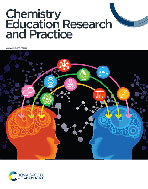A holistic framework for developing purposeful practical work
Abstract
This work applies a cultural historical activity theory (CHAT) framework to understand how the outcome of a high school laboratory task may be positively influenced without making changes to the hands-on practical task itself. Informed by cognitivism, novel practical instruction videos that were based on the same video but had different audio content (“one video two voice overs”) have been developed to provide opportunities to prepare for the practical task procedure and then to reflect upon the task's underlying concepts. We use the CHAT framework as a guide to change pupils’ lab roles and rules of engagement were made to structure student interaction and facilitate an equitable and cooperative learning environment. We demonstrate that students benefit from these interventions and achieve significantly higher attainment scores in GCSE chemistry examination practical-themed questions than those students who prepared for the practical task by watching either the novel videos or standard instructional videos during the lesson. In, addition the students working in the scaffolded cooperative learning environment also perceived their confidence in relation to practical-related tasks at higher levels than those in other groups. This work contributes a novel approach to laboratory teaching by placing greater emphasis on dialogic processes as a tool accomplish a practical-based activity.


 Please wait while we load your content...
Please wait while we load your content...